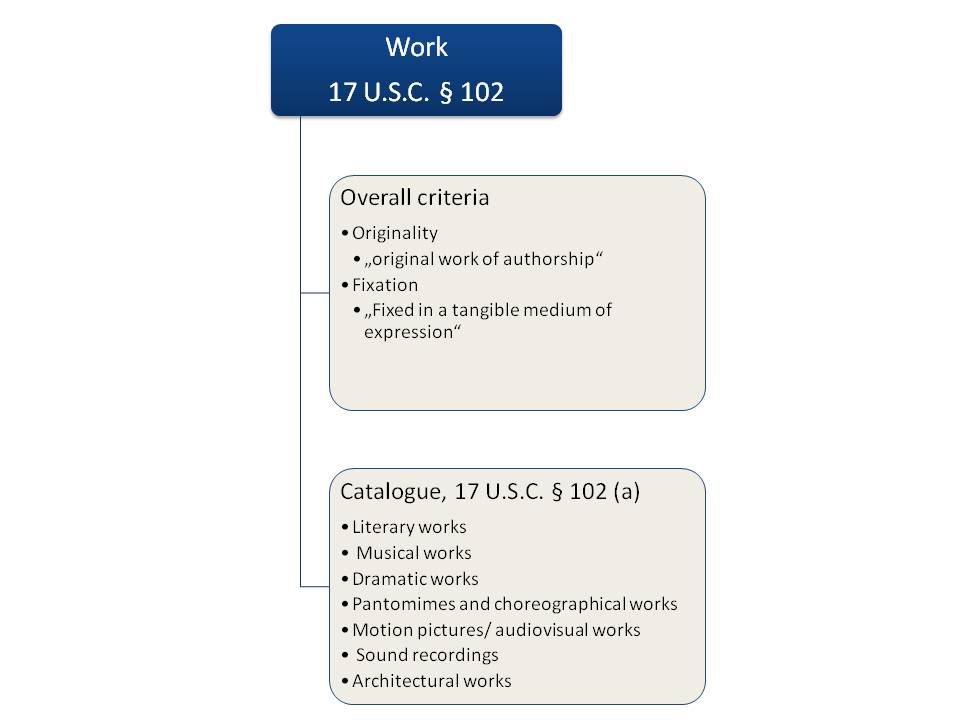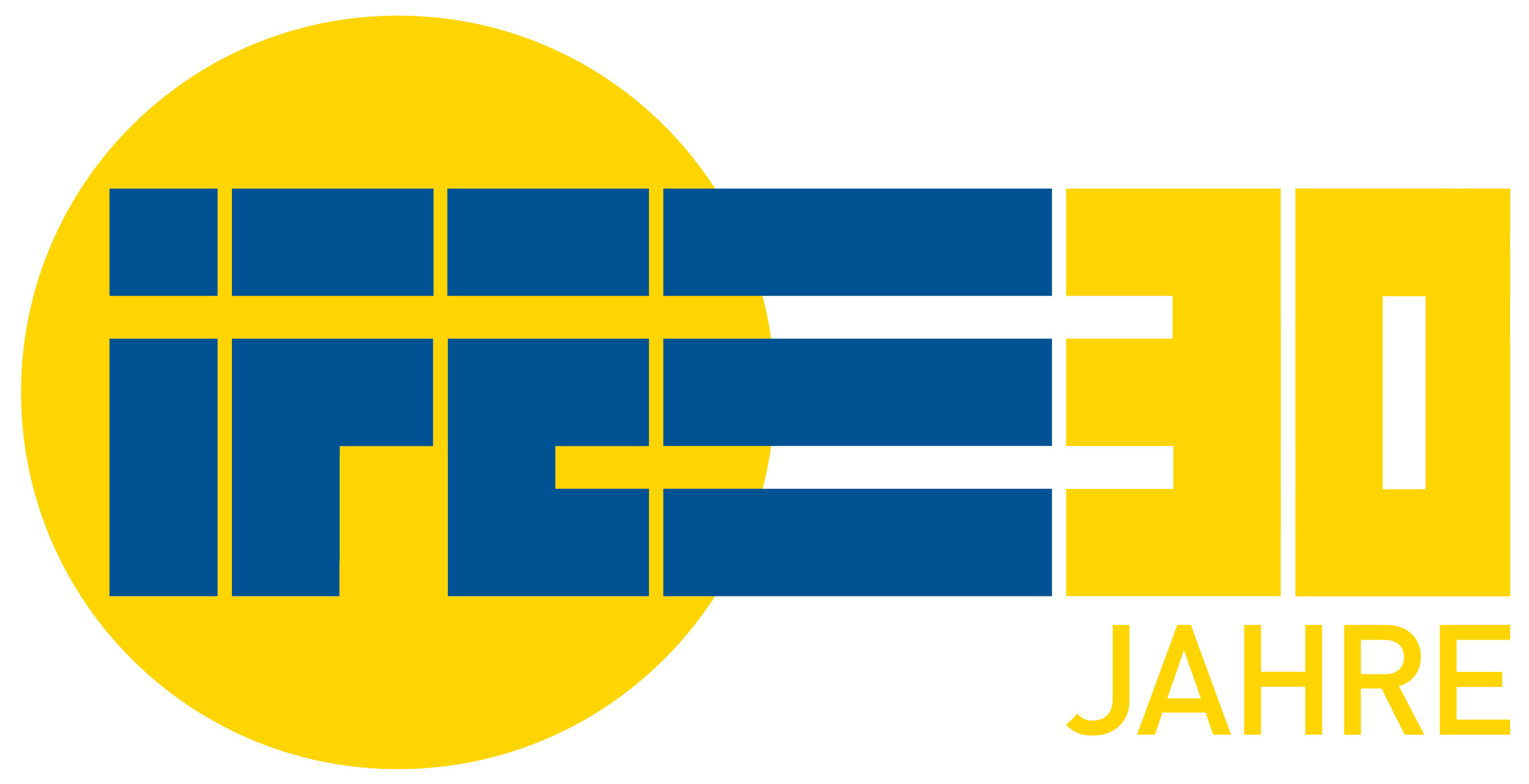Version [31252]
Dies ist eine alte Version von IntUrhRWorks erstellt von Jorina Lossau am 2013-06-17 14:00:31.
Internationaler Gewerblicher Rechtsschutz und Urheberrecht II
Teil 2 - Copyrightable Works
| File | Last modified | Size |
|---|---|---|
| IntUrhRExclusion.jpg | 2023-10-06 18:36 | 40Kb |
| IntUrhRWorkUSC.jpg | 2023-10-06 18:36 | 42Kb |
| The scope of copyright is defined in 17 U.S.C. § 102 in accordance to most copyright laws. There is a general definition of “works” that need mainly two criteria: originality and fixation. Additionally, there is a catalogue of works “the listing is “illustrative and not limitative,”” (Copyright Law Revision – Senate Report No. 94-473 (1975), p. 52). |
§ 102 - Subject matter of copyright: In general
(a) Copyright protection subsists, in accordance with this title, in original works of authorship fixed in any tangible medium of expression, now known or later developed, from which they can be perceived, reproduced, or otherwise communicated, either directly or with the aid of a machine or device. Works of authorship include the following categories:
(1) literary works;
(2) musical works, including any accompanying words;
(3) dramatic works, including any accompanying music;
(4) pantomimes and choreographic works;
(5) pictorial, graphic, and sculptural works;
(6) motion pictures and other audiovisual works;
(7) sound recordings; and
(8) architectural works.
(b) In no case does copyright protection for an original work of authorship extend to any idea, procedure, process, system, method of operation, concept, principle, or discovery, regardless of the form in which it is described, explained, illustrated, or embodied in such work.
§ 103 - Subject matter of copyright: Compilations and derivative works
(a) The subject matter of copyright as specified by section 102 includes compilations and derivative works, but protection for a work employing preexisting material in which copyright subsists does not extend to any part of the work in which such material has been used unlawfully.
(b) The copyright in a compilation or derivative work extends only to the material contributed by the author of such work, as distinguished from the preexisting material employed in the work, and does not imply any exclusive right in the preexisting material. The copyright in such work is independent of, and does not affect or enlarge the scope, duration, ownership, or subsistence of, any copyright protection in the preexisting material. |

| Of the two fundamental criteria one is a positive definition, the other is an exclusive one. They both represent the two main principle of copyright protection. On one hand’s side, merely individual works (meaning original works) deserve protection as there is a specific improvement by the creator that has a value for the society and that is worth an incentive as exclusive rights. On the other hand’s side, the criteria “fixation” excludes protection of mere ideas as there is no progress if they are not fixed in any medium. The need for the fixation of ideas avoids the monopolization of ideas. |
Copyright Law Revision – Senate Report No. 94-473 (1975), p. 51As a basic condition of copyright protection, the bill perpetuates the existing requirement that a work be fixed in a “tangible medium of expression,” and adds that this medium may be one “now known or later developed,” and that the fixation is sufficient if the work “can be perceived, reproduced, or otherwise communicated, either directly or with the aid of a machine or device.” This broad language is intended to avoid the artificial and largely unjustifiable distinctions, derived from cases such as White-Smith Publishing Co. v. Apollo Co., 209 U.S. 1 (1908), under which statutory copyrightability in certain cases has been made to depend upon the form or medium in which the work is fixed. Under the bill it makes no difference what the form, manner, or medium of fixation may be—whether it is in words, numbers, notes, sounds, pictures, or any other graphic or symbolic indicia, whether embodied in a physical object in written, printed, photographic, sculptural, punched, magnetic, or any other stable form, and whether it is capable of perception directly or by means of any machine or device “now known or later developed.” |
important decisions |
| The formerly (until 1977) necessary publicationof the copyrightable work (with ©-notice) or its registrationat the Copyright Office is no longer a condition for copyright protection. This was a requirement for the entrance of the USA to the RBÜ. Nevertheless, the Copyright Office still exists but changed its responsibilities (see 17 U.S.C. § 701). Although the official registration is not required it is still possible. If the work or a copy of it bears the ©-notice the infringer has not the defense of “innocent infringement” (see 17 U.S.C. § 401 (d)). |
Diese Seite wurde noch nicht kommentiert.

